Are you dreaming of escaping to a charming hill station where colonial-era buildings blend with misty mountain views? Do you long for cool pine-scented air and breathtaking Himalayan vistas? The search ends here with this Shimla Travel Guide — your pathway to exploring one of India’s most beloved mountain retreats.
Standing tall at 2,205 meters above sea level, Shimla isn’t just Himachal Pradesh’s capital; it’s a sanctuary for weary souls seeking refuge from scorching Indian summers. But navigating this popular destination requires insider knowledge to truly experience its magic without the common tourist pitfalls.
This comprehensive Shimla Travel Guide delivers everything you need—from hidden gems to practical tips—ensuring your Himalayan adventure becomes a cherished memory rather than a series of avoidable mishaps.
About Shimla
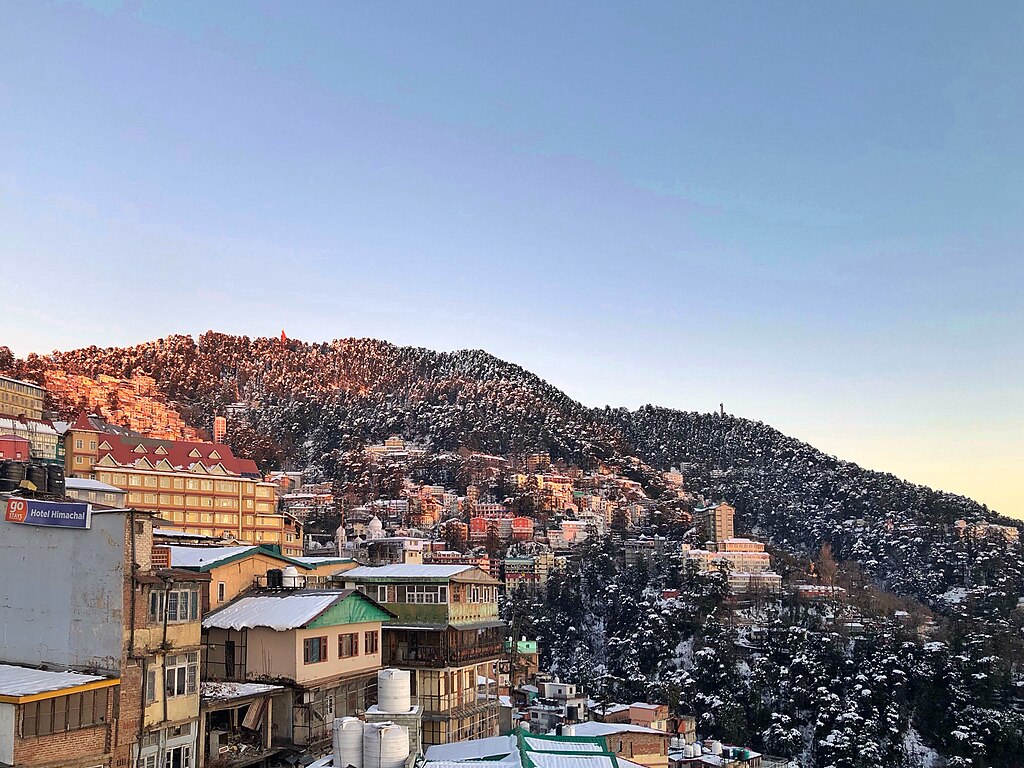
The moment you step into Shimla, you feel it—that distinctive blend of British colonial charm and authentic Himalayan culture that captures your heart instantly. Once the summer capital of British India, Shimla still carries whispers of its colonial past through its architecture, while embracing its Indian heritage with open arms.
Imagine waking up to misty mountains framing your window, the scent of deodars filling your lungs, and the distant chatter of locals starting their day. That’s the everyday magic Shimla offers its visitors.
Historical Significance of Shimla
Before becoming a tourist hotspot, Shimla was a sleepy village until the British discovered its pleasant climate in the 1820s. They gradually transformed it into their summer capital, building Victorian structures that still stand proudly today.
Walking through Shimla is like stepping through pages of history—each building, each pathway telling stories of diplomatic decisions and leisurely summer retreats that shaped the subcontinent.
Geography and Climate
Nestled in the southwestern ranges of the Himalayas, Shimla spreads across several hills, including Jakhu, Prospect Hill, Observatory Hill, and Summer Hill. This mountainous terrain gives the city its distinctive character—roads and buildings seem to cascade down hillsides, creating that postcard-perfect scenery tourists treasure.
The climate remains pleasantly cool through most of the year, with summer temperatures rarely exceeding 28°C (82°F) and winters bringing snowfall and temperatures that can drop below freezing. This climate variation is precisely what makes timing your visit so crucial—a factor we’ll address in detail further in this Shimla Travel Guide.
Must See
Every corner of Shimla holds promise, but some places stand out as absolute must-visits that capture the essence of this hill station’s unique appeal.
The Ridge and Christ Church
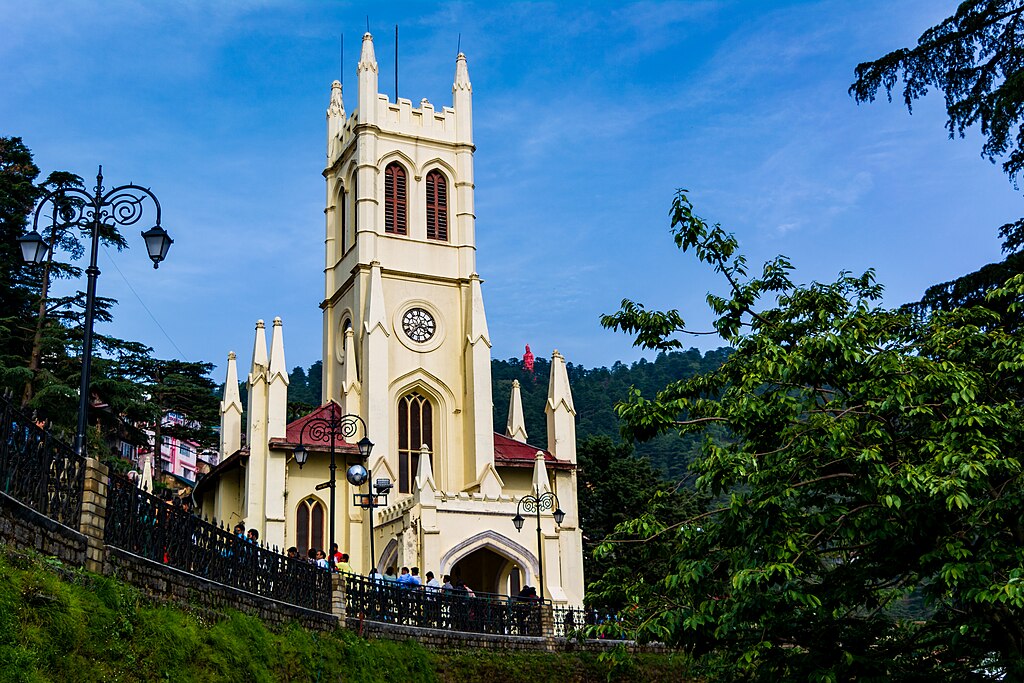
Standing at The Ridge feels like being on top of the world. This large open space in the heart of Shimla offers panoramic views of the surrounding mountains that will leave you breathless. The iconic Christ Church, with its neo-gothic architecture and stained glass windows, stands majestically beside it—creating perhaps the most photographed scene in town.
Visiting at sunset transforms this experience into something magical, as golden light bathes the yellow-painted church against the backdrop of darkening mountain silhouettes.
Jakhu Temple
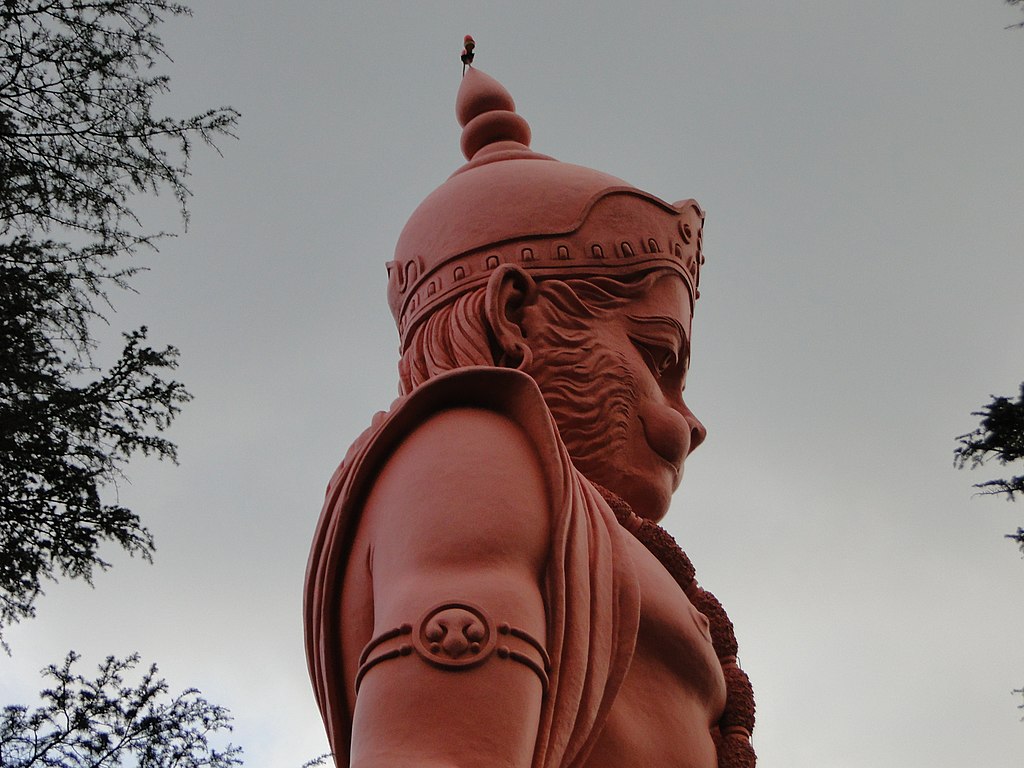
Are you ready for a spiritual adventure combined with monkey business? The climb to Jakhu Temple, dedicated to Lord Hanuman, offers both. Standing at Shimla’s highest point, this temple features a 108-feet tall Hanuman statue that watches over the town.
The path upward winds through dense forest inhabited by playful but sometimes mischievous monkeys (tip: don’t carry visible food or shiny objects). Your reward at the summit? A profound sense of accomplishment and views that make every step worthwhile.
Mall Road
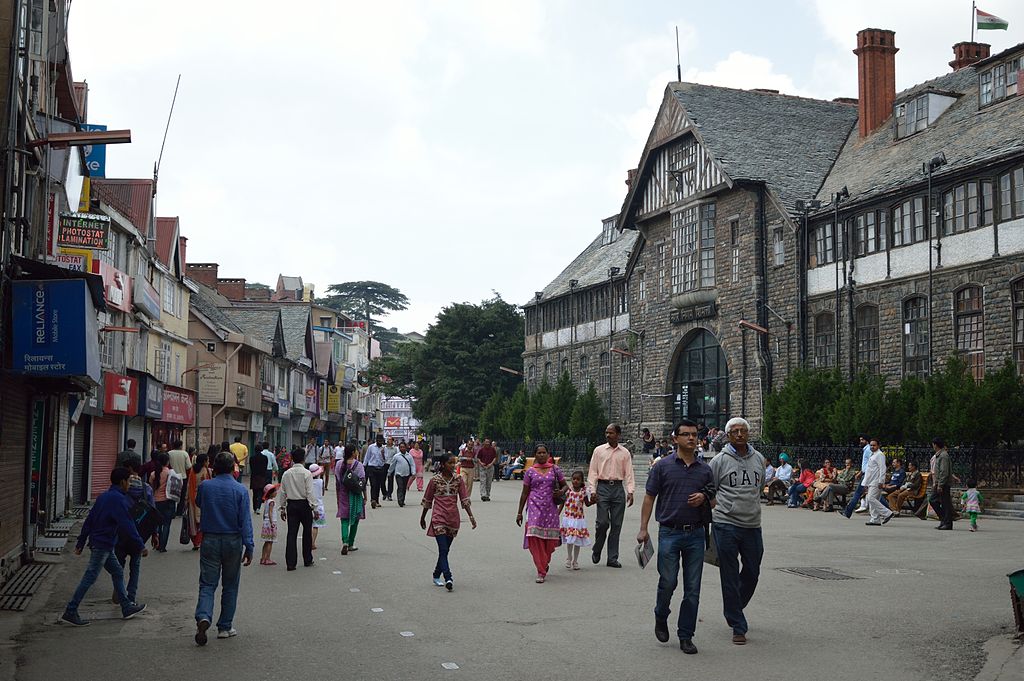
The heart of Shimla’s social scene beats along Mall Road. This pedestrian-friendly stretch hosts everything from colonial-era buildings to modern cafes and shops selling local handicrafts. As you stroll, you’ll mingle with tourists and locals alike, absorbing the vibrant energy that makes Shimla come alive.
Don’t rush this experience—instead, embrace the unhurried pace. Stop for a cup of steaming chai at a local cafe, watch people pass by, and feel yourself becoming part of Shimla’s daily rhythm.
Viceregal Lodge (Rashtrapati Niwas)
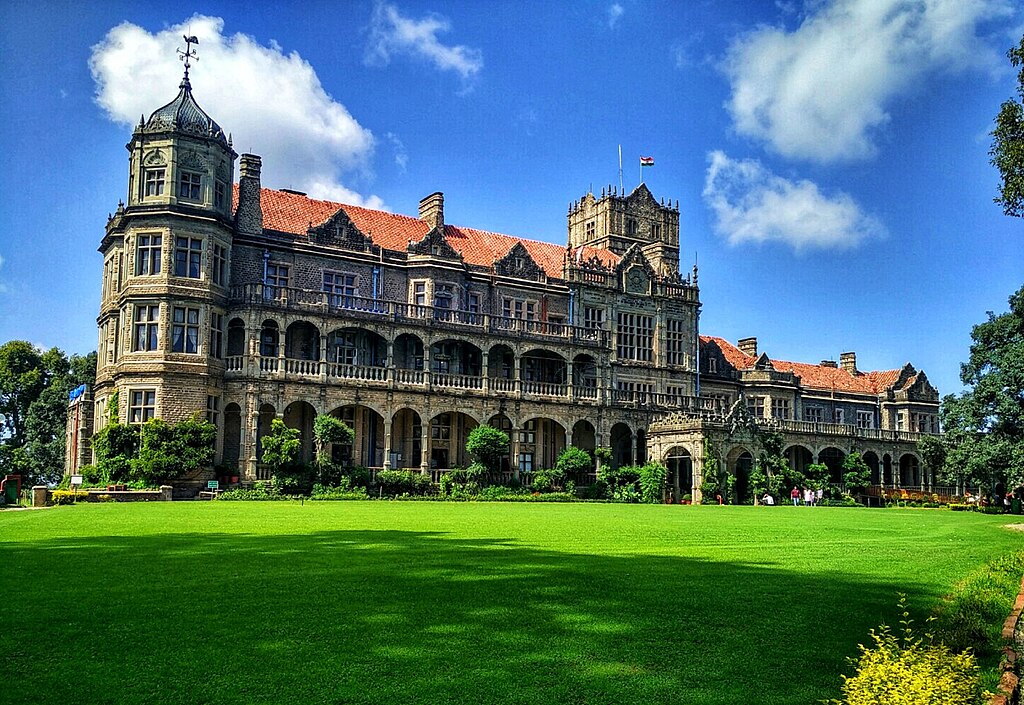
History buffs, prepare to be transported back in time. This magnificent building, once the residence of the British Viceroy of India, now houses the Indian Institute of Advanced Study. Its imposing architecture and meticulously maintained gardens speak volumes about colonial grandeur.
The guided tour reveals fascinating stories of political decisions made within these walls that shaped modern India. The wooden interiors, original furniture, and historic photographs create an immersive historical experience that deepens your understanding of Shimla’s significance.
Best Time to Visit
Timing is everything when planning your Shimla adventure, and this Shimla Travel Guide wouldn’t be complete without breaking down the seasonal experiences.
Summer Glory (March to June)
Summer brings Shimla to life with pleasant temperatures between 15°C and 28°C (59°F-82°F). The skies remain largely clear, flowers bloom across hillsides, and outdoor activities reach their peak accessibility.
This is prime time for hiking, enjoying outdoor cafes, and exploring every corner of the region without weather constraints. However, this ideal weather attracts crowds—expect busier attractions and higher accommodation prices.
Monsoon Magic (July to September)
There’s something undeniably romantic about misty mountains draped in rain clouds. The monsoon transforms Shimla into a lush green paradise, with waterfalls springing to life across the landscape.
While occasional heavy downpours might interrupt your sightseeing, the reduced tourist numbers and lower prices make this an attractive option for budget travelers. Just pack appropriate rain gear and embrace the moody atmosphere that gives Shimla a mystical quality during these months.
Autumn Transition (October to November)
Ask any experienced traveler about the best time to visit hill stations, and many will point to autumn. Shimla during these months offers clear skies, comfortable temperatures, and forests painted in warm hues of red and gold.
Tourist crowds thin out after the summer rush, allowing for a more peaceful experience of popular attractions. This shoulder season represents perfect balance—good weather, reasonable prices, and breathing room to truly absorb Shimla’s charms.
Winter Wonderland (December to February)
Imagine walking through streets dusted with fresh snow, your breath forming clouds in the crisp mountain air. Winter transforms Shimla into a magical wonderland that appeals to those seeking a distinctive experience.
Temperatures drop below freezing, especially at night, but the possibility of witnessing snowfall makes the cold worthwhile for many visitors. Winter sports enthusiasts head to nearby Kufri for skiing, while others enjoy the special atmosphere of Shimla draped in white. Just prepare for some weather-related closures and transportation challenges during heavy snowfall.
How to Reach
Accessibility is a key consideration in any Shimla Travel Guide, as your journey to this hill station forms a significant part of your overall experience.
By Air
The nearest airport to Shimla is Jubbarhatti Airport, about 23 kilometers from the city center. However, it offers limited connectivity with small aircraft operating primarily from Delhi. Most travelers find it more convenient to fly into Chandigarh Airport (approximately 120 km away) which has better connections to major Indian cities.
From Chandigarh, the journey continues by road through increasingly beautiful mountain terrain—consider this transition part of the adventure rather than merely transportation.
By Rail
The UNESCO World Heritage Kalka-Shimla Railway offers perhaps the most memorable approach to Shimla. This narrow-gauge railway, constructed in 1903, winds through 102 tunnels and over 800 bridges, climbing gradually into the mountains.
The journey from Kalka to Shimla takes around 5-6 hours, but the spectacular views make time seem irrelevant. Book the Himalayan Queen or the luxury Shivalik Deluxe for the best experience, and keep your camera ready—each curve reveals photo-worthy vistas.
By Road
Well-maintained highways connect Shimla to major North Indian cities:
- From Delhi: 343 km (approximately 7-8 hours)
- From Chandigarh: 117 km (approximately 3-4 hours)
- From Manali: 250 km (approximately 7-8 hours)
Self-driving offers maximum flexibility, but navigating mountain roads requires experience. Alternatively, government and private buses operate regular services, with Volvo buses providing comfortable options for longer routes.
Local Transportation Within Shimla
Once you arrive, remember that Shimla’s core areas restrict conventional vehicles. The central zone around Mall Road and The Ridge remains largely pedestrian, preserving the town’s charm and air quality.
For exploring within city limits, options include:
- Walking (the most authentic way to experience Shimla)
- Local buses (inexpensive but often crowded)
- Taxis (available for longer distances or when carrying luggage)
The city also offers an electric lift system connecting the lower bazaar area to The Ridge, saving you a steep climb while providing a unique experience.
Best Things to Do
Beyond sightseeing, Shimla offers experiences that engage all your senses. This section of our Shimla Travel Guide focuses on activities that create lasting memories.
Trek to Jakhoo Hill
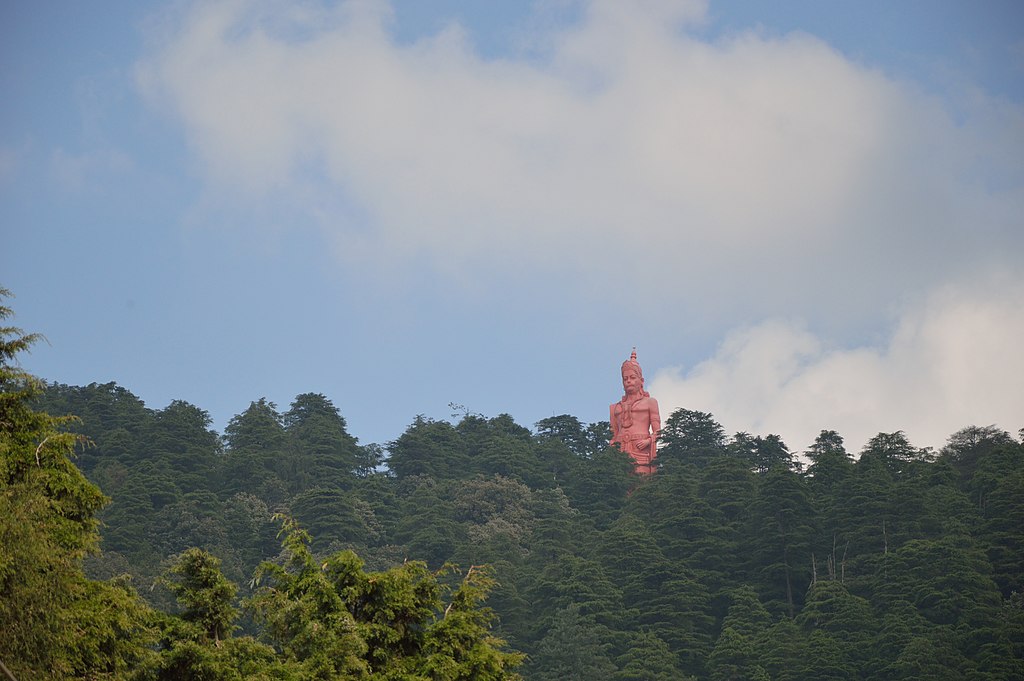
Rising early for this trek rewards you with watching Shimla gradually wake up below. The 2-kilometer trail from The Ridge to Jakhoo Hill takes you through deodar forests where sunlight filters through branches, creating magical light patterns on the path.
Along the way, you’ll encounter local life—morning walkers exchanging greetings, vendors setting up their day’s business, and yes, those infamous monkeys watching your progress. The physical exertion combined with natural beauty creates a sense of accomplishment that elevates your mood for the entire day.
Shop at Lakkar Bazaar
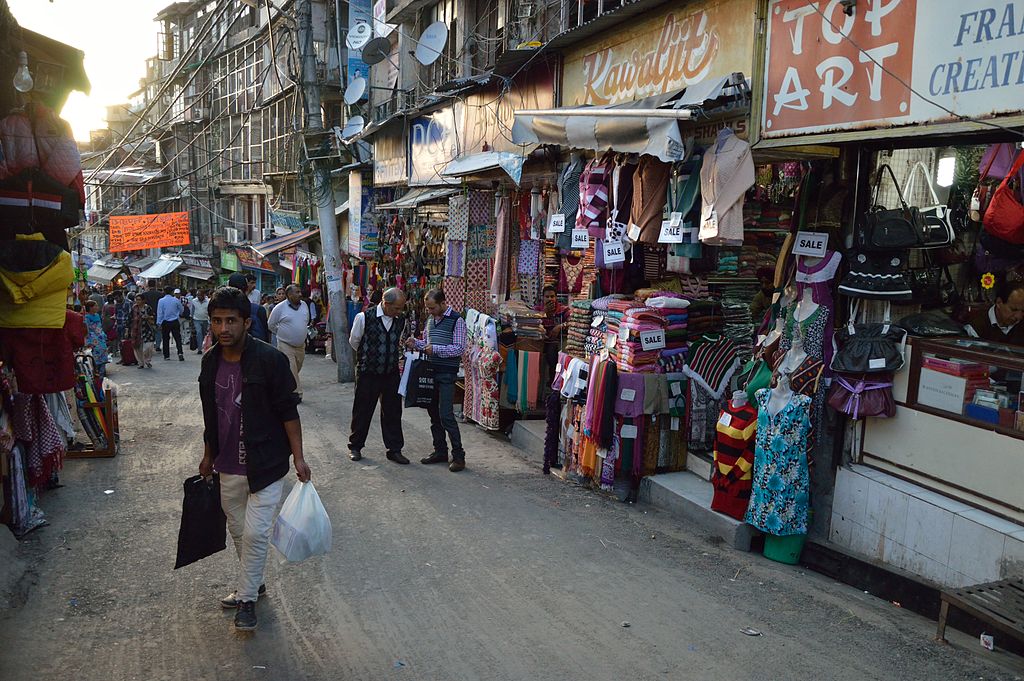
Just off Mall Road lies Lakkar Bazaar, a shopper’s paradise specializing in wooden crafts. The scent of cedar and pine fills the air as artisans transform local wood into everything from practical kitchen items to intricate decorative pieces.
Walking through this narrow market, you’ll find yourself drawn to countless treasures—carved walking sticks, wooden toys, and traditional Himachali artifacts that make perfect souvenirs. The joy of discovering these handcrafted items and interacting with the craftspeople adds a personal dimension to your shopping experience.
Ride the Toy Train
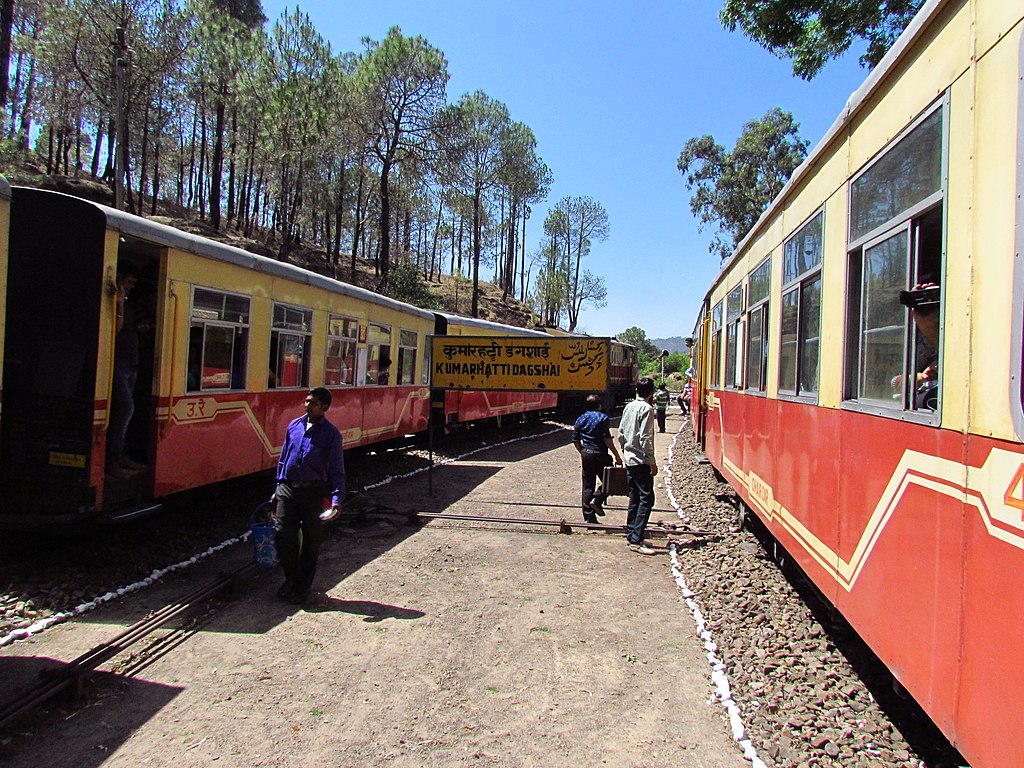
The narrow-gauge “toy train” journey between Shimla and nearby stations offers a nostalgic experience that transports you back to a simpler time. As the small train chugs along at a leisurely pace, each curve reveals new perspectives of the mountains and valleys.
The train makes brief stops at charming stations like Summer Hill and Tara Devi, allowing glimpses into rural Himalayan life. The rhythmic sound of wheels on tracks combined with cool mountain breezes creates a meditative experience unlike any other mode of transport.
Ice Skating (Winter Only)
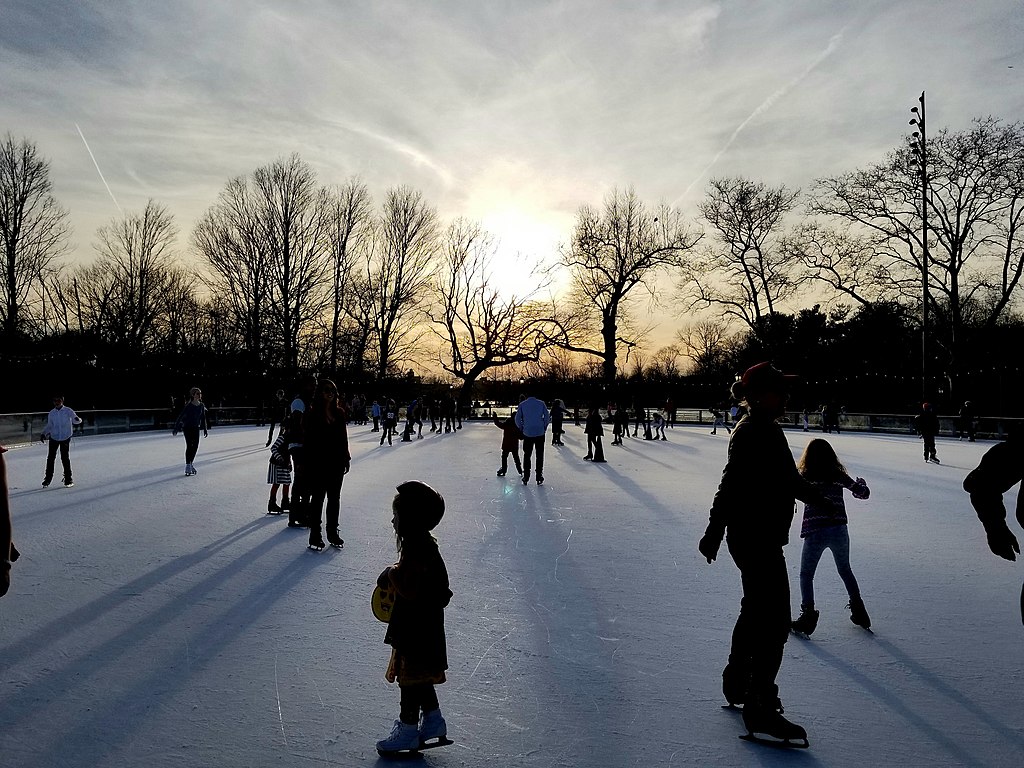
Few visitors realize that Shimla houses one of Asia’s largest open-air ice skating rinks. When winter temperatures cooperate, the rink opens for both morning and evening sessions, drawing enthusiasts and novices alike.
There’s something uniquely exhilarating about gliding across ice surrounded by mountains, the crisp air filling your lungs as you gradually gain confidence on skates. Even if you stumble more than skate, the joyful atmosphere and shared experience with fellow visitors create memories filled with laughter.
Nature Walks in Glen Forest
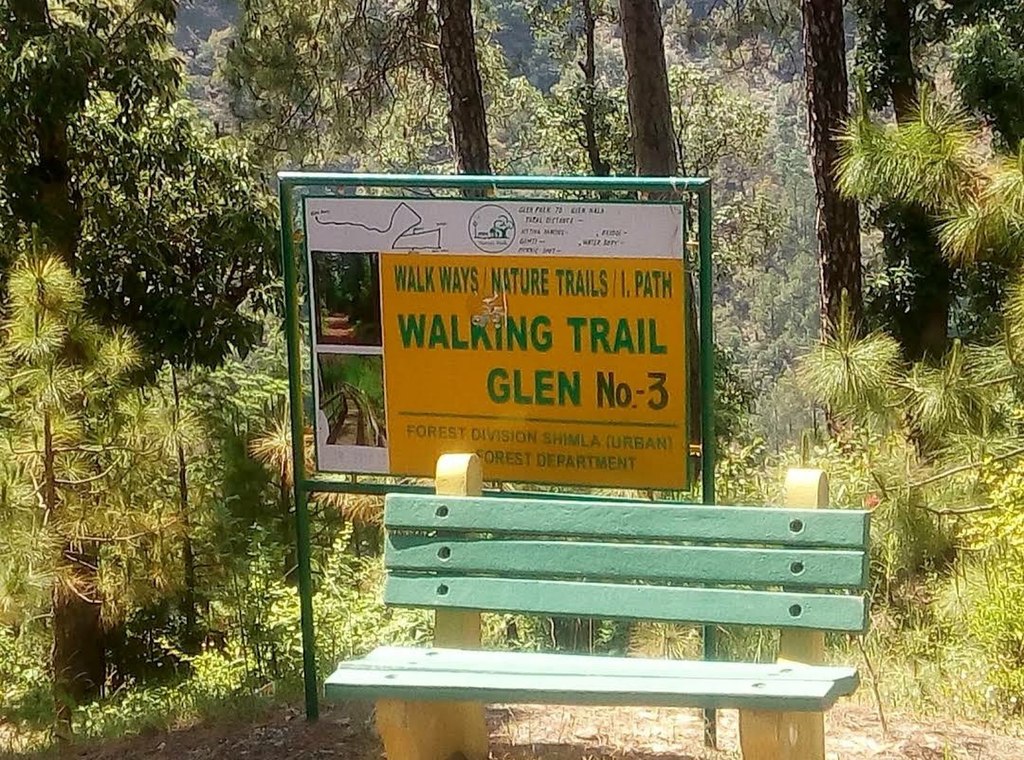
Just 4 kilometers from crowded Mall Road lies Glen Forest, a dense woodland offering solitude and connection with nature. Walking paths wind through ancient trees where birds provide natural music that drowns out any remaining thoughts of urban life.
Small streams cross the paths occasionally, creating perfect spots to pause, listen to gurgling water, and reconnect with a slower rhythm of life. These moments of peaceful contemplation often become travelers’ most treasured memories of Shimla.
Places to Eat
No Shimla Travel Guide would be complete without exploring the culinary landscape that adds flavor to your mountain getaway.
Cafe Simla Times
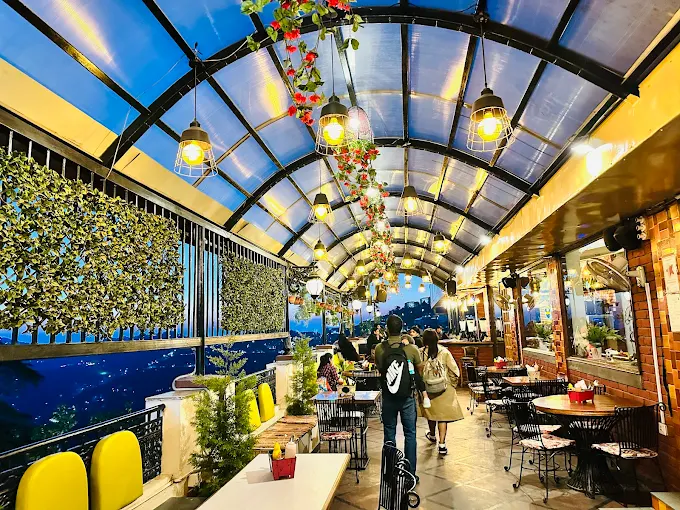
Housed in a heritage building with wooden interiors that whisper tales from the past, this cafe combines ambiance with excellent food. Large windows frame mountain views that complement your meal perfectly.
Their signature dishes include a locally-inspired siddu (steamed bread stuffed with savory fillings) and contemporary interpretations of Himachali cuisine. The warm hospitality makes you feel less like a customer and more like a welcomed guest in someone’s mountain home.
The Restaurant at Clarkes Hotel
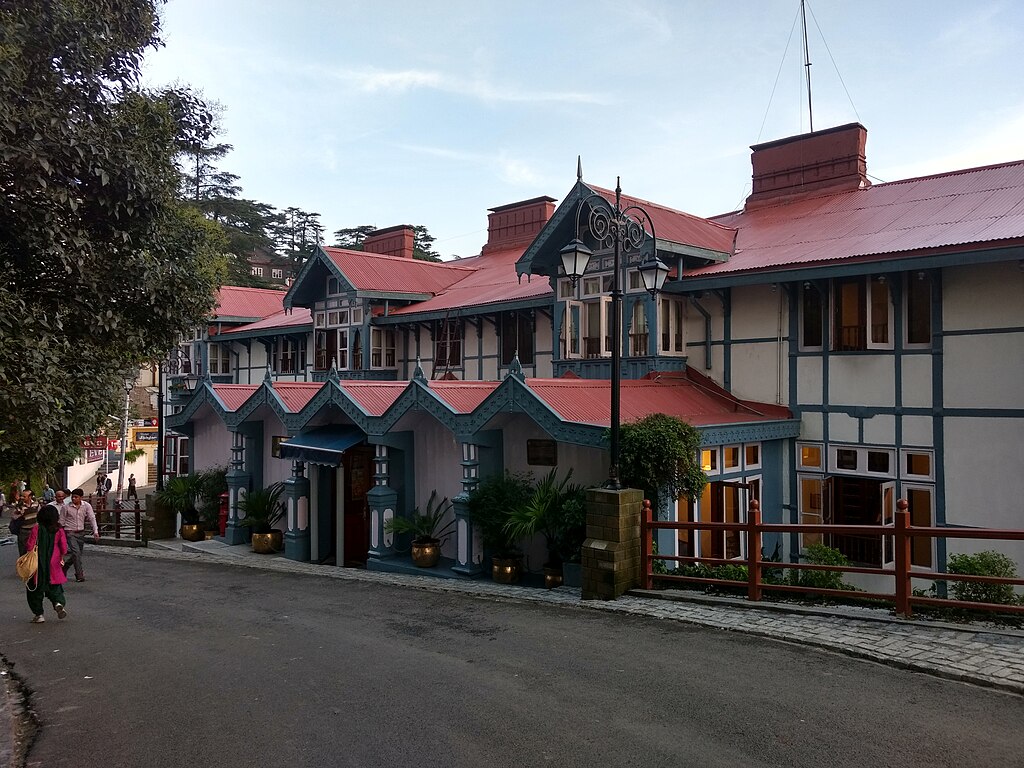
For those seeking a taste of colonial-era dining, this historic establishment delivers both atmosphere and culinary excellence. White-gloved service, crisp linen tablecloths, and a menu that balances British influences with Indian flavors create a dining experience that transcends mere nourishment.
Their Anglo-Indian dishes like Railway Mutton Curry connect you to Shimla’s unique cultural heritage, while panoramic valley views make every meal memorable regardless of what you order.
Indian Coffee House
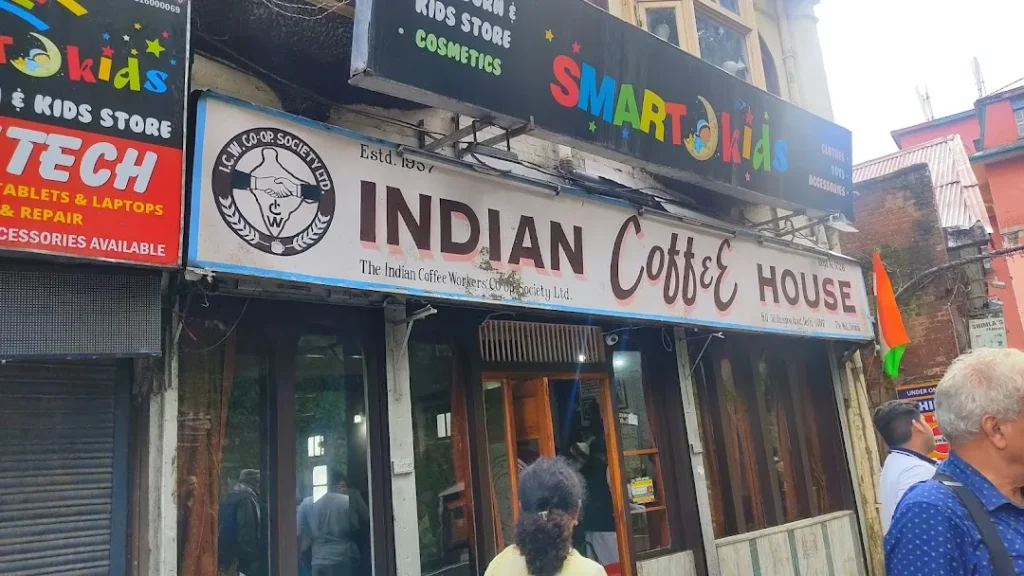
This iconic establishment has served politicians, intellectuals, and travelers since 1957. Its no-frills approach focuses on consistently good South Indian coffee and simple, satisfying meals at prices that seem from another era.
The conversations happening around you—locals discussing politics, students debating philosophy, and tourists exchanging tips—add as much flavor to the experience as the food itself. This authentic slice of Shimla life shouldn’t be missed.
Himachali Rasoi
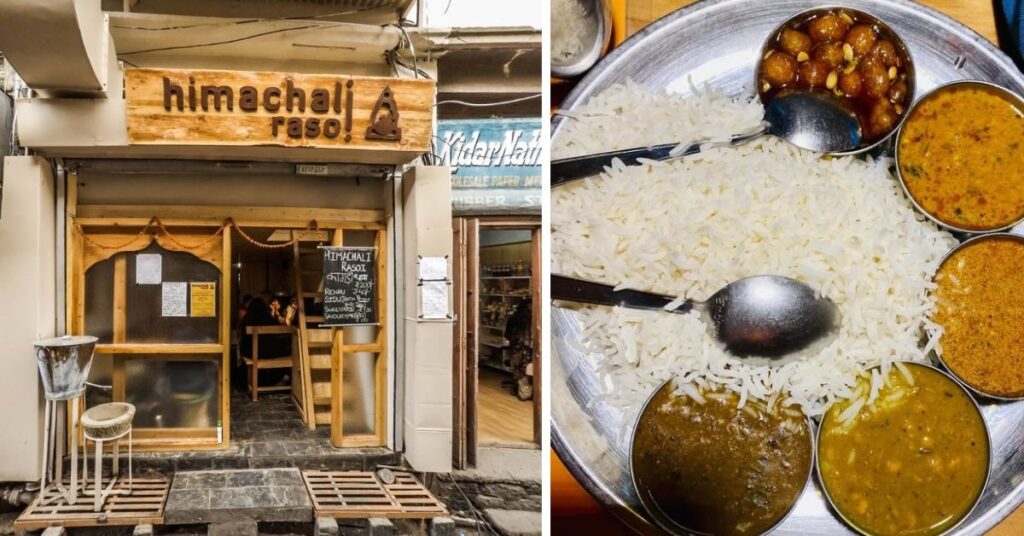
To truly understand a place, you must taste its traditional cuisine. This restaurant specializes in authentic Himachali dishes rarely found in tourist-oriented establishments.
Try the dham (a traditional thali served during celebrations), madra (chickpeas in yogurt gravy), and chha gosht (lamb cooked in buttermilk)—flavors distinctly different from mainstream Indian cuisine. The staff takes pride in explaining each dish’s cultural significance, adding context that enhances your appreciation.
Cecil Restaurant
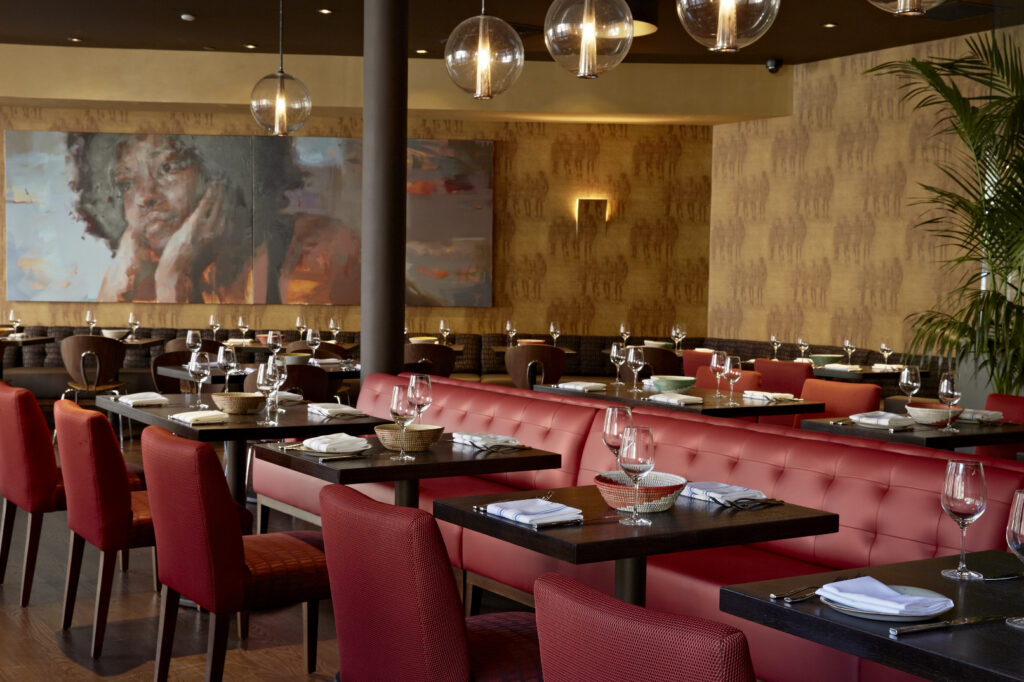
Sometimes vacation calls for indulgence, and this fine-dining establishment in The Oberoi Cecil answers magnificently. The restaurant combines European elegance with panoramic Himalayan views through floor-to-ceiling windows.
Their seasonal menu focuses on locally sourced ingredients transformed through both Western and Indian culinary traditions. While certainly a splurge compared to other Shimla dining options, the impeccable service and culinary artistry justify the occasion.
Related Packages on Ghum India Ghum
Planning your Shimla adventure becomes significantly easier with curated packages that handle logistics while ensuring you experience the destination’s essence. Here are some excellent options from Ghum India Ghum that complement this Shimla Travel Guide perfectly:
Shimla Tour Package
This focused package lets you experience Shimla’s highlights without distractions. It typically includes:
- Accommodations at carefully selected properties that balance comfort with authentic local character
- Guided tours of major attractions including The Ridge, Christ Church, and Jakhu Temple
- Free time for personal exploration and shopping
- Transportation arrangements that showcase scenic routes
Perfect for: First-time visitors to Shimla who want a well-rounded introduction to the hill station.
Complete Himachal Tour Package
For those wanting to place Shimla within the broader context of Himachal Pradesh, this comprehensive package delivers:
- Multi-destination itinerary including Shimla, Manali, Dharamshala, and other key Himachali destinations
- Diverse experiences from urban exploration to rural immersion
- Opportunity to compare different Himalayan cultures and landscapes
- Logistical support throughout your journey across challenging mountain terrain
Perfect for: Travelers with sufficient time who want to understand how Shimla fits into Himachal’s diverse cultural and natural landscape.
Special Himachal Tour Package
This package focuses on creating unique experiences beyond standard sightseeing:
- Participation in seasonal festivals or cultural events
- Visits to less-touristed villages around Shimla
- Curated activities like cooking classes or craft demonstrations
- Higher-end accommodations with distinctive character
Perfect for: Return visitors to Shimla seeking deeper connections or travelers preferring experiences over checklist tourism.
Himachal with Tajmahal Tour
Combining mountain majesty with one of India’s most iconic monuments:
- Contrasting experiences of Himalayan culture and Mughal splendor
- Efficient transportation connections between northern India’s highlights
- Balanced itinerary preventing mountain fatigue
- Comprehensive historical context provided throughout
Perfect for: International visitors maximizing limited time in India or those wanting to experience contrasting facets of Indian geography and culture.
Conclusion
As our Shimla Travel Guide comes to a close, remember that Shimla isn’t just a destination to check off your travel list—it’s an experience that remains with you long after returning home.
The misty mornings where mountains emerge gradually from clouds. The unexpected kindness of locals pointing you toward hidden viewpoints not mentioned in guidebooks. The taste of steaming chai cupped between cold hands as snow falls softly outside. These moments form the true essence of Shimla.
While this guide provides structure for your journey, leave room for serendipity. Some of your most treasured memories might come from unplanned detours—a conversation with an elderly shopkeeper sharing stories of Shimla’s transformation over decades, or discovering a quiet forest path that seems created just for your solitary enjoyment.
Shimla rewards those who approach with open hearts and unhurried spirits. The hill station has withstood the test of time as a sanctuary for those seeking reprieve from chaos, connection with nature, and glimpses of a unique cultural heritage where British colonial influence merged with Himalayan traditions.
Whether you’re watching sunrise paint the distant snow-capped peaks, bargaining good-naturedly in a local market, or simply sitting quietly absorbing the atmosphere on a bench along The Ridge, Shimla offers countless opportunities for joy and reflection.
As you plan your journey using this Shimla Travel Guide, remember that the true magic of travel lies not in perfectly executed itineraries but in how places change us. Shimla, with its perfect balance of natural splendor and human history, has a remarkable capacity to send travelers home with not just photographs, but fresh perspectives.
FAQ | Shimla Travel Guide
Is Shimla safe for solo travelers?
Shimla ranks among India’s safest tourist destinations for solo travelers, including women. The main tourist areas remain active into evening hours, and locals generally demonstrate helpful attitudes toward visitors. Basic precautions apply: avoid isolated areas after dark, keep valuables secure, and maintain awareness of your surroundings—the same common sense that serves travelers worldwide.
How many days are ideal for a Shimla trip?
For first-time visitors, 3-4 days provides sufficient time to experience Shimla’s major attractions without rushing. This allows for exploration of central areas, a day trip to nearby destinations like Kufri, and buffer time for weather changes or unexpected discoveries. Those seeking deeper immersion or including extensive outdoor activities might prefer 5-7 days.
Is Shimla suitable for elderly travelers?
Shimla presents certain challenges for mobility-limited travelers due to its hilly terrain and numerous stairways. However, with proper planning, elderly visitors can enjoy significant portions of the experience. Consider accommodations near Mall Road to minimize climbing, utilize the lift system connecting lower bazaar to The Ridge, and explore taxi options for more distant attractions. Many major viewpoints and attractions offer accessibility options worth researching in advance.
What clothing should I pack for Shimla?
Layering proves essential regardless of season. Summer visitors should pack light cottons for daytime, plus light jackets or shawls for evenings when temperatures drop considerably. Winter demands serious cold-weather gear including thermal underlayers, heavy jackets, gloves, caps, and sturdy waterproof footwear. Monsoon travelers need quality rain protection and quick-drying fabrics. Year-round, include comfortable walking shoes with good traction for navigating Shimla’s slopes and occasionally slippery surfaces.
Are ATMs readily available in Shimla?
The central areas of Shimla feature numerous ATMs from major banks, particularly around Mall Road and nearby commercial areas. However, smaller surrounding villages may have limited or no banking facilities. Wise travelers keep some cash reserves while exploring outlying areas and should not rely exclusively on cards, especially in smaller establishments and markets where cash remains preferred.
Is altitude sickness a concern in Shimla?
At 2,205 meters (7,234 feet), Shimla sits high enough for some visitors to experience mild altitude symptoms but rarely causes serious altitude sickness. Symptoms like mild headaches, fatigue, or shortness of breath typically resolve within 24-48 hours as your body acclimatizes. Arriving visitors should stay hydrated, limit alcohol, avoid strenuous activities initially, and ascend gradually if coming directly from lowland areas.
Can I drink tap water in Shimla?
Despite Shimla’s general development, tap water remains unsafe for visitors. Rely on bottled water from reputable brands for drinking and brushing teeth. Most hotels provide filtered or bottled water, but verify their purification methods. Environmental travelers might consider portable water purification systems as alternatives to single-use plastic bottles.
What’s the internet connectivity like?
Shimla offers generally reliable internet connectivity in central areas and most accommodations. Major Indian mobile carriers provide good coverage throughout the main town, with 4G widely available. Signal strength may diminish in some valleys or indoor locations due to the mountainous terrain. Consider downloading maps and essential information for offline access when exploring more remote areas around Shimla.
Are there good hospitals in Shimla?
Shimla houses several quality medical facilities including the government-run Indira Gandhi Medical College & Hospital and various private clinics capable of handling common medical issues. For specialized treatment, however, serious cases might require evacuation to larger cities like Chandigarh or Delhi. Travelers should maintain comprehensive travel insurance and bring sufficient supplies of any prescription medications.
What unique souvenirs should I buy from Shimla?
Look beyond standard tourist trinkets to find truly meaningful souvenirs: handcrafted wooden objects from Lakkar Bazaar, Himachali shawls featuring distinctive weaving patterns, pine and cedar products including essential oils, local fruit products like apple preserves or chutneys, and Kullu caps representing traditional Himachali headwear. These authentic items connect more meaningfully to the regional culture than generic souvenirs found throughout India.

